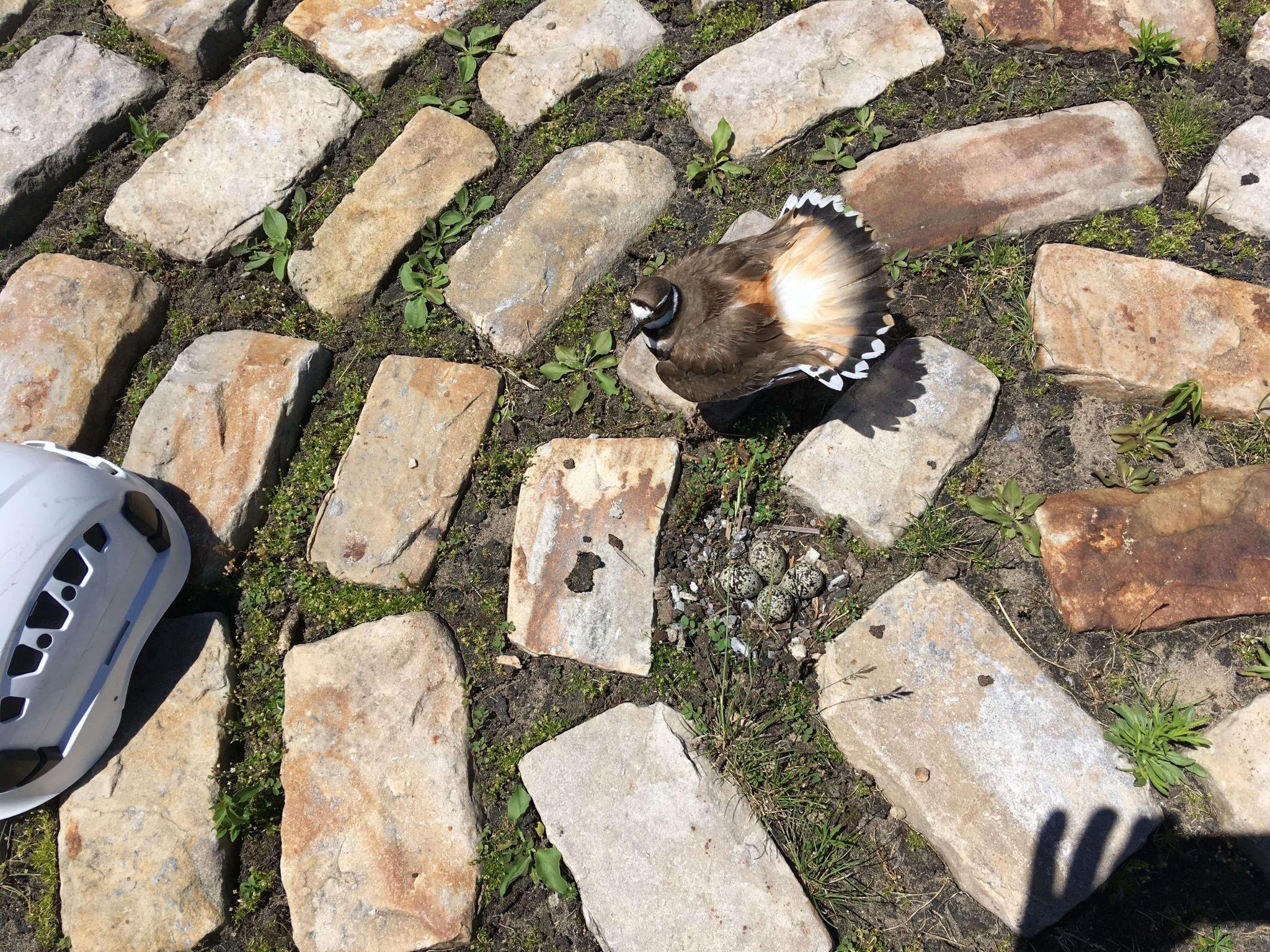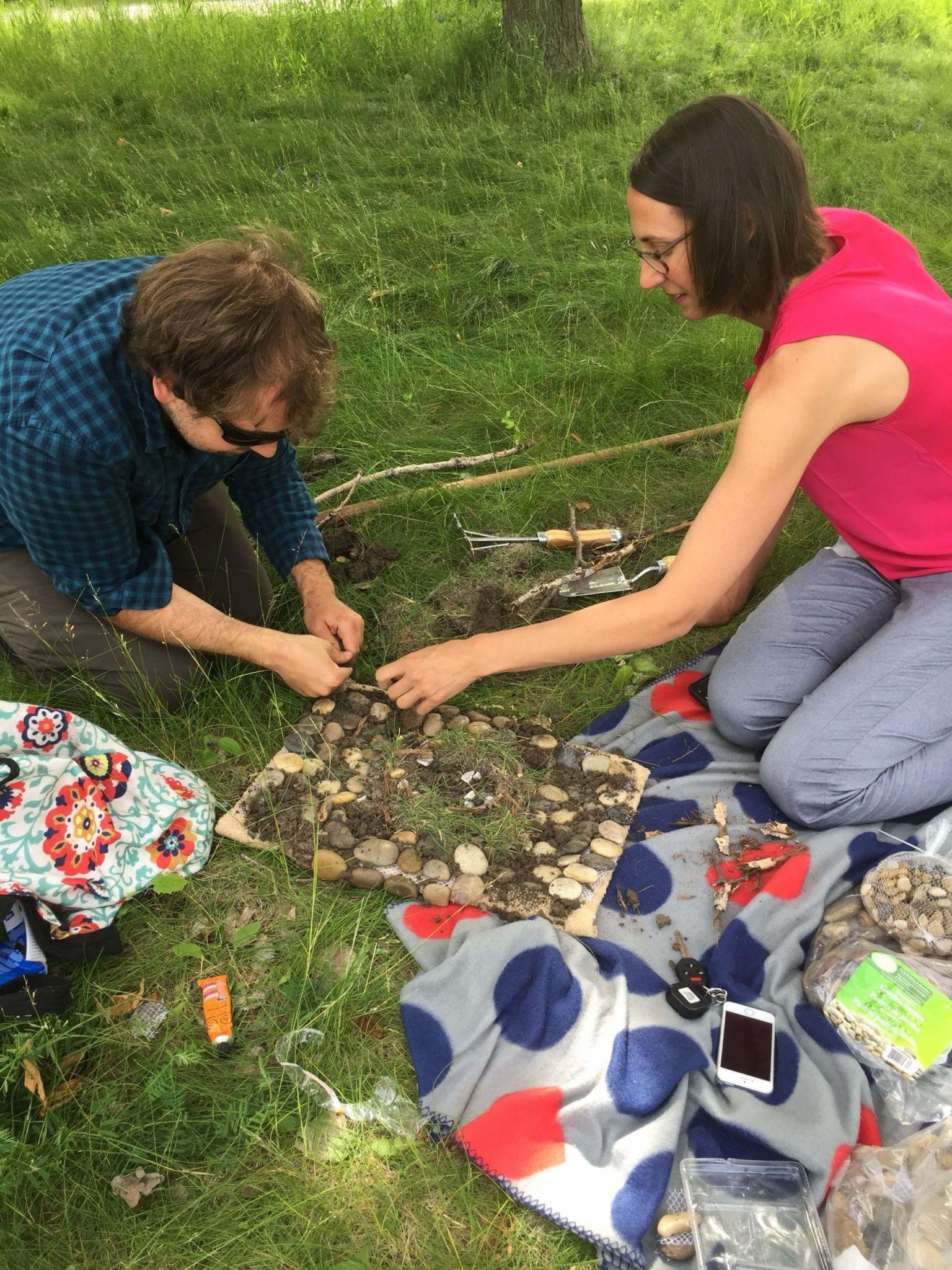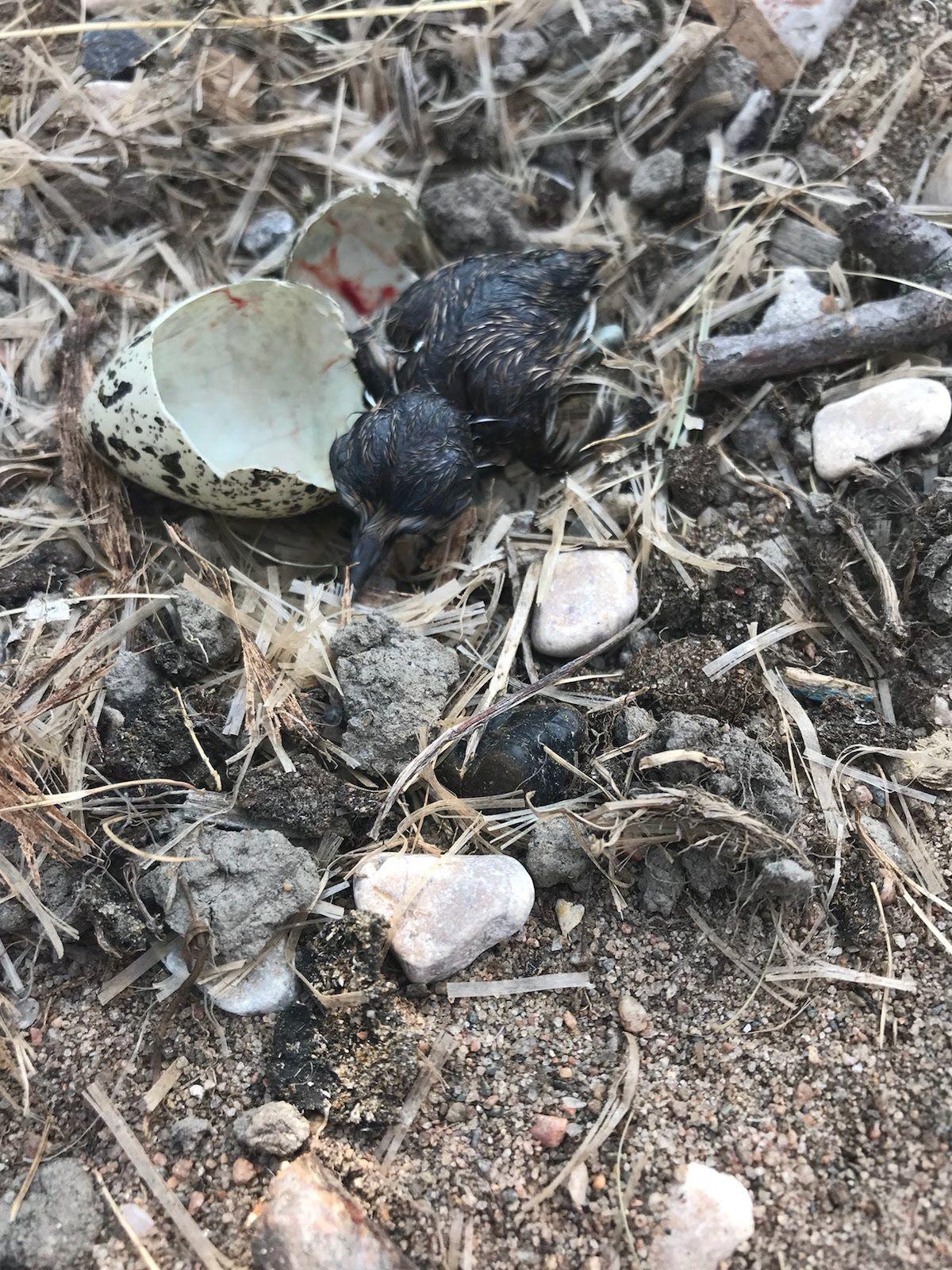Author: Camille Tremblay, Biologist
As a biologist, I am constantly reminded to expect the unexpected. I’m one of the very few biologists at the National Capital Commission (NCC), so I’m asked to advise on all sorts of issues and projects relating to wildlife, nature and environmental conservation. My ability to think on my feet and the fact that I’m surrounded by dedicated colleagues helped me during #Bluesnest. I hope my experience will be used as a case study if ever a similar situation arises.
Discovering the nest

June 22, 2018, started like any other day, until I received a phone call asking me to make my way to LeBreton Flats. A killdeer nest containing four eggs had been found within the expected footprint of the main stage at Ottawa Bluesfest. This was four days before construction of the stage was to start, and this was the first time we had been required to move a nest!
Many people have since asked me how we went about relocating the nest with the added pressure of making it happen in time for one of Canada’s biggest music festivals and despite many people’s opinions that the relocation would fail.
Getting a permit
The killdeer is protected under Canada’s Migratory Birds Convention Act, meaning that we couldn’t relocate its nest without a special permit from Environment and Climate Change Canada. After leaving the site of the nest, my colleagues and I got to work on submitting an application for a “migratory bird damage or danger permit” from Environment and Climate Change Canada. The permit would allow us to relocate the nest to an area 20 m to 25 m west of its current location. Normally, these applications can take over a month to process. We didn’t have the luxury of time and crossed our fingers that approval would come through within days.
At 12:30 pm on June 26, 2018, we obtained the permit authorizing the NCC and its nominees, Ottawa Bluesfest and Monika Melichar of the Woodlands Wildlife Sanctuary, to safely relocate the killdeer nest. On to moving the nest!
Getting ready for the big move

As soon as we got the permit, I worked with my colleague Alex Stone to build an artificial mobile nesting platform constructed of soil, grass and pebbles, to simulate the original nesting surface. We collected supplies around the office and made a trip to the dollar store down the street.
We then went back to the Bluesfest site to create a 50 m protection buffer with caution tape around the relocation area, to make sure media and the public were at a sufficient distance to not further stress the nesting parents.
We also created a new nest at the final nest location, by removing the sod to expose the soil, and placed pebbles, sticks and grass to imitate the native nest.
Moving the nest
The relocation, if successful, would allow the nest to remain and the eggs to hatch in their natural environment. We were all too aware that relocation could cause the parents to disown the nest and abandon the eggs. In the event of nest abandonment, the eggs were to be transported to a rehabilitation facility to provide the best probability for survival. The Woodlands Wildlife Sanctuary was willing and able to move the nest.
We placed the mobile nesting platform near the nest, and Monika Melichar from the Woodlands Wildlife Sanctuary transferred the eggs to the platform in the same configuration as in the original nest. Monika transferred as much of the original nesting material as possible, including vegetation, sticks and pebbles. The artificial nesting platform was placed directly over top of the original nest in the cobblestone circle and left until the incubating adult came back and settled on the nest. It was supper time.
We waited 20 minutes after the adults re-associated with the eggs before making another move, one metre this time. A total of eight moves (about a seven-metre distance) were made on June 26, 2018, during the three daylight hours we had left. At the end of this first day of relocation, the nesting platform had moved from cobblestone, to asphalt and finally to grass.
We got to work bright and early the next morning to continue the relocation process. Another 13 moves were made. The killdeer pair continued to incubate the eggs at the nest’s new locations, unfazed by the festival crew who were already hard at work setting up the main stage just a few metres away. The move was a success!
The eggs finally hatched

On June 30, three of the four eggs hatched.
The next day, the two adults left the unhatched egg in the nest and moved away, south of the Kichi Zībī Mīkan with the three chicks. When the last egg hatched, NCC conservation officers transferred the abandoned chick to the Ottawa Valley Wild Bird Care Centre.
It is anticipated that the bird will be released into the wild close to the Ottawa Bluesfest site by the end of summer. He’s thriving.
What struck me during this experience was the teamwork. I witnessed all these organizations and individuals working together to make sure the nest’s move was a success regardless of other human, artistic, or business priorities; focus on a single purpose not just because it is the law, but because it is the right thing to do. I was also astonished to see that the story generated international media attention and that people all over the world were rooting for us and for the chicks. Everyone involved fell in love with the killdeer family and wanted to become experts on this bird.
This was an amazing adventure with a great ending. Mission accomplished!